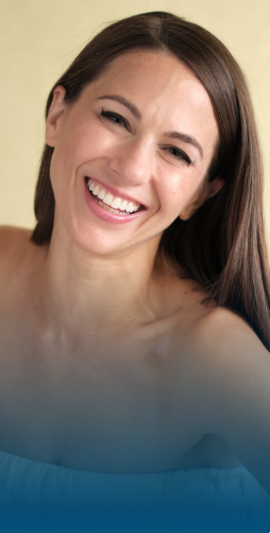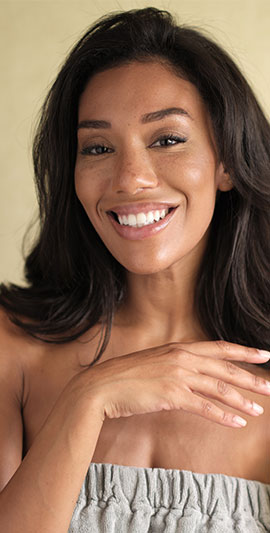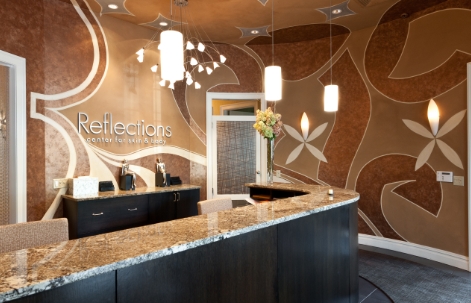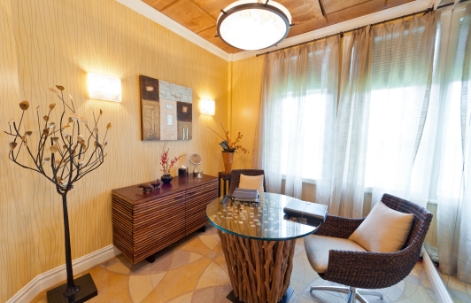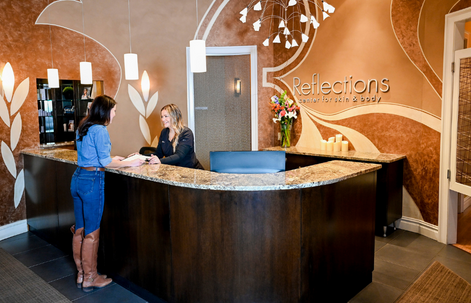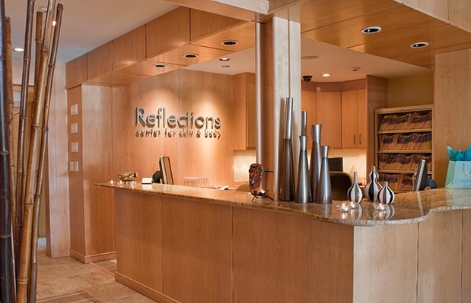Paradoxical adipose hyperplasia(PAH) with CoolSculpting – How Much Risk Is There That This Will Happen to You?!
Dr. Mitchell Chasin, a cosmetic physician in New Jersey who’s offered CoolSculpting for over 10 years and treated thousands of patients – and who has also had PAH complications referred to him for corrective treatment – explains the risks of Paradoxical Adipose Hyperplasia (PAH) with CoolSculpting, and what you can do to minimize or eliminate your risks.
Can CoolSculpting Make Fat Cells Grow Out of Control?
We’re just going to address the elephant in the room – everyone who is considering CoolSculpting right now is secretly wanting to know if it’s going to make their fat cells grow out of control and leave them disfigured, like Linda Evangelista – and while we don’t think the risk is high enough to stop offering this treatment (it is still very rare), we’re very much about having open, honest conversations – and we want to get into the nitty gritty, so that you can decide whether this risk is worth it to you, or not.
What is Paradoxical Adipose Hyperplasia, or PAH – and How Does CoolSculpting Cause it?
Paradoxical Adipose Hyperplasia (PAH) occurs when subcutaneous adipose tissue ( fat cells below the skin but above the muscle) multiply through an increase in their reproduction (a speeding up of their natural replacement rate, sot hat they are not just replacing themselves, but now growing in number).
In CoolSculpting, PAH usually appears 3-6 months after treatment, and takes the approximate shape of the handpiece that was used.
CoolSculpting is a non-invasive, non-surgical treatment that removes subcutaneous fat through destruction of fat cells with controlled cooling. Because fat cells contain more water than surrounding tissue, they freeze at a slightly higher temperature than other tissues, allowing us to selectively destroy fat cells without harming or injuring anything else in the area treated. However, similarly, because fat cells can be selectively destroyed using a lower temp than surrounding tissues, CoolSculpting is not the only option able to create this effect. SculpSure works by using laser heat to achieve a very similar outcome.
How is it caused?
There has not been a large enough study that has replicated causing PAH, so the information we have is all correlation-based (looking for similarities amongst those who have the issue) and not causation (knowing that having these commonalities means we can cause this issue, with some degree of certainty).
Due to the fact that no one wants to volunteer to have this issue caused, in the name of science, it’s unlikely any study that establishes causation will ever be done.
However, based on those that have reported this issue, the following similarities seem to be present in a significant proportion of the sufferers:
- Male
- Hispanic
- Treating lower abdomen of males, especially with a large handpiece (when 2 smaller handpieces may fit better)
- Not massaged or massaged improperly following treatment
- Improper fitting handpieces – or improper placement of handpieces – so that the treatment occurs on some areas that have very little or no pinchable fat
Who is most likely to get paradoxical adipose hyperplasia?
Science doesn’t have an answer for us here – but we do know is that of those who reported PAH, a much higher proportion are male patients undergoing cryolipolysis (the generic name for CoolSculpting’s treatment technology). This is significant because many more women have this treatment then men. There is a higher proportion of Hispanic individuals reporting PAH, though it’s unclear whether there is a higher proportion of those treating with CoolSculpting are Hispanic, or not.
How is paradoxical adipose hyperplasia treated?
Generally, the treatment of choice is laser liposuction. Because this fat is usually fibrous and dense, it’s best removed after it has been broken up with laser (SmartLipo) and/or ultrasound waves (Vaser). In our experience, about 1/3 of patients have been able to reach an endpoint both they and their physicians are completely happy with after laser liposuction, 1/3 have been able to reach an acceptable or good endpoint with multiple sessions of laser liposuction, and 1/3 have not reached an endpoint they or their physicians agree is acceptable, despite having exhausted all treatment options. At this point in time, there is no reported spontaneous resolution (i.e. it has never been reported that the issue just disappeared or resolved on its own, without surgical intervention).
How common is paradoxical hyperplasia after CoolSculpting?
Right now, the reported rate is 0.0051%. This is based upon on the total number of treatments being provided (which CoolSculpting tracks through “cycles” being purchased and used by practices) versus the number of PAH reports made to CoolSculpting. There is a real incentive for all patients with PAH to report this to CoolSculpting corporate, since they will guide the patient through the treatment process to resolve this issue and usually end up paying for that treatment. We say all of this to let you know that we have heard rumors from others that they believe the incidence rate to be higher than reported, and we feel strongly that everyone with this issue would be reporting it, making this data accurate.
How is PAH Treated- and Is the Cure Worse Than the Disease?
How do we treat PAH complications? Well let’s start by saying that PAH has thankfully never occurred for our patients that we treated with CoolSculpting – but it does occur – and like with all complications in medicine, if you perform enough treatments, it’s likely you will experience a patient who has a bad complication – the true value of your medical care as a cosmetic physician is how you handle the bad complications. It’s a real test of your knowledge, skill, and quick thinking – and that’s why so often you see physicians speaking so highly of those in this field who are skilled at revision work – because it’s even harder to fix a complication that you didn’t witness (and don’t know all the fine details of).
Paradoxical Adipose Hyperplasia is felt to be best-treated with liposuction removal of the affected fat cells. In some cases, more than 1 session of liposuction is needed – and sometimes, patients and physicians will decide that after a few rounds of liposuction, the treatment is simply not working well for the patient, and the risks of further liposuction outweigh the potential improvements it might offer.
We have treated PAH complications at our office – these were cases that were referred to us by the company that owns CoolSculpting (Zeltiq and then Allergan, now Abbvie) because of our close relationship with this company and their knowledge of our physician team’s skills. In the cases we’ve treated over the years, we estimate about one-third were easily resolved with a single case of liposuction. Another third were resolved after 2 sessions of liposuction, and one third were never fully resolved in a way that the patient and physician felt was satisfactory.
What Can I Do To Avoid the Risks of CoolSculpting, Including PAH?
If you decide that PAH is just not a risk you’re willing to take, there are other options. Now, each of these works in different ways – and that’s going to mean they’re more effective for certain types of people (and generally not as effective for people for whom CoolSculpting is the best choice). We’ll talk more about what the drawbacks might be for each of these within their descriptions below.
SculpSure, Zerona, Liposonix, Lipo Laser, & Strawberry Laser
There have been several non-invasive fat reduction technologies that have come onto the market over the years. Only SculpSure has proven to be as effective as CoolSculpting – and that’s why it’s the only other one of these options we offer. SculpSure uses heat from lasers, transferred through the skin, to selectively melt fat and render it waste. CoolSculpting basically does the same thing, just with freezing the fat. The body then clears away this waste product, removing 20-25% of the fat in the area treated with each of these treatments. But, SculpSure is slightly different than CoolSculpting in that it uses flat laser panels to attach to the treatment area, whereas CoolSculpting uses curved, suction handpieces. With both CoolSculpting and SculpSure, we find the fitment of the handpiece to the body part being treated (whether it’s a curved area, where CoolSculpting fits better; or a flat area, where SculpSure fits better), impacts the individual’s results – giving them slightly higher or slightly lower fat reduction per treatment – and that means someone we recommend CoolSculpting to, may not get as good of a result with SculpSure as they would have with CoolSculpting, at a tradeoff of removing the risks for PAH.
Liposonix is nearly as effective but is a a painful process. For that reason, we don’t recommend that option.
Zerona, Lipo Laser, and Strawberry Laser all claim to remove fat – but don’t actually – they cause fat cells to dump their fat stores out, making it slightly less calorically taxing to burn up that fat – but if you do not get active burning it off, the fat itself isn’t damaged, and the body will shuttle it back into the fat cell storage centers (this does created a small caloric tax, causing a very small percentage to be burned off). We do not provide these treatments or recommend them to patients – as we feel they are so minimally effective that they are not worth the time and money, when compared to CoolSculpting or SculpSure.
EmSculpt
EmSculpt offers different results than CoolSculpting, but they are similar in that they are both non-invasive (no needles, no surgery, no downtime) procedures that shape and sculpt the body. EmSculpt uses focused High Intensity RF Energy to cause muscles to contract – either the abs, butt, or other areas – and because these muscles are contracting, that causes them to burn up some fat in that activity (a much smaller percentage than CoolSculpting removes) and to increase the tone, definition, and size of the muscles being treated by about 16%.
Liposuction & Laser Liposuction: Vaser, Smartlipo, SlimLipo, SAFE Lipo, & MicroAire PAL
Liposuction is a surgical procedure, but it can be performed under local anesthesia – and this actually gives the patient not only much lower risk (by removing the risk of general anesthesia) and reduces the intensity and duration of recovery (because the numbing injections we use for local anesthesia offer blood flow restrictive and bacteriostatic properties, so you bruise less and have less risk of inflammation, both of which are why people have so much pain after aggressive lipo that’s been done under general anesthesia).
But regardless of which type of liposuction you were to have (and we offer them all), liposuction does not have the risk of PAH like CoolSculpting, but overall the risk is higher than CoolSculpting – they’re just different risks. And these risks really vary by patient.
Related Pages:
CoolSculpting vs. SculpSure Blog


